What is the most lovable sea mammal in the world? There are so many it is hard to pick, but at the top of the list is the Manatee. I once had the opportunity to swim with a baby manatee in Crystal River, Florida under the guidance of Snorkel with Manatees, a company that provides boating trips to visit these creatures in their natural habitat. From the boat, we could see the air bubbles from the manatee’s nose as it came to the surface to breath. This told us it was time to slip into the water. Once in the water, our group of four tried to be as still as possible by floating on the surface. All of a sudden, as I was peering through my mask, the manatee surfaced in front of me! This baby was as big as us! She was just as curious about us as we were about her! We all hung out with her for a while as she dove up and down and played on the boat ladder! Her mom eventually came back to get her. Words just can describe what an awesome experience this was! 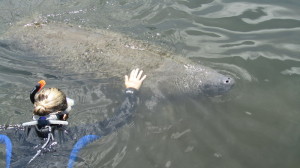
Manatees are very unique and are considered a ‘strange’ species because they belong to a small and unusual group of herbivorous mammals that live underwater- herbivorous aquatic mammals. Evolutionary biologists are interested in manatees because they are an evolutionary link to the more common land-grazing mammals such as the elephant. Scientist can also trace their evolutionary lineage to grass-eating land mammals that lived at least 50 million years ago!
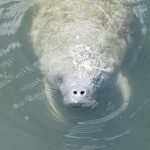 Manatees live in the warm shallow rivers, bays, canals and coastal areas and are also known as ‘sea cows’. They prefer water above 68 degrees Fahrenheit and will rarely be found in water below that temperature. A day in the life of these gentle creatures consists of slowly swimming, eating, and resting. Manatees usually swim at a speed of 5 miles per hour, however they can swim 15 miles per hour in short bursts. Believe it our not, manatees have fingernails and if you could see an x-ray of a front flipper, it looks very much like the bone structure of a human hand.
Manatees live in the warm shallow rivers, bays, canals and coastal areas and are also known as ‘sea cows’. They prefer water above 68 degrees Fahrenheit and will rarely be found in water below that temperature. A day in the life of these gentle creatures consists of slowly swimming, eating, and resting. Manatees usually swim at a speed of 5 miles per hour, however they can swim 15 miles per hour in short bursts. Believe it our not, manatees have fingernails and if you could see an x-ray of a front flipper, it looks very much like the bone structure of a human hand.
As a herbivore, manatees eat water grasses, weeds, and algae. A manatee can eat a tenth of its weight in just 24 hrs. Manatees weigh anywhere from 440 to 1,300 pounds (lbs.) which would translate to eating anywhere from 44 to 130 lbs. of aquatic grasses, weeds, and algae every day! For comparison, do you think you eat a tenth of your body weight in 24 hours? Human beings typically eat 4 lbs. per day on average. If you weighed 70 lbs. that means you would eat 7 lbs. of food! Humans definitely don’t eat as much as manatees!
The Florida Manatee is probably the best known species, but Manatees can also be found in the marshy coastal areas and rivers of the Caribbean Sea, Gulf of Mexico, Amazon Basin, and West Africa. The Amazonian Manatee, unlike some other species of Manatee, never ventures into salt water. In Puerto Rico you can kayak with manatees in Salinas Bay. While kayaking, you mainly see and hear their noses breaking through the water to breath. Once they take a breath, their noses valves that close to keep the water out while underwater. Don’t you wish your nose could do that too?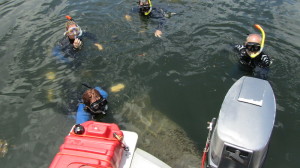
Manatees are classified as endangered animals which means we don’t have many left in the wild and that they are protected by laws to help sustain and increase their population. There are an estimated 2,500 to 3,000 manatees living in Florida waters at this time. Manatees are vulnerable to motor boats and fishing nets. In Florida, there are signs reminding boaters to be on the look-out for manatees as to avoid accidental collisions with this slow moving creatures. Learn more as to how you can help the manatees at the Human Society website and the Save the Manatee Club started by singer Jimmy Buffet and former US Senator Bob Graham. Remember if your wastewater drains to a river…where do rivers go? You got it- they drain into oceans! Using environmentally friendly cleaners and using your drains and toilets for only the intended purposes, are two things you can do that help many aquatic habitats stay healthy including the mantees’!
Look for “Manatee Math” coming to a Science Bug Blog post soon!
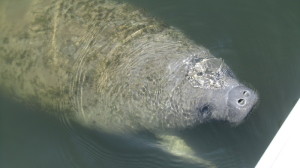
Category: Blog, Mammals, Sea Life, Wildlife
Crystal River Florida, Florida manatees, herbivores, herbivorous aquatic mammals, how fast do manatees swim, how much do manatees weigh, Jimmy Buffet, mammals, manatee, manatees, Salinas, Save manatees, Snorkel with Manatees, things to do in Florida, weight of manatees
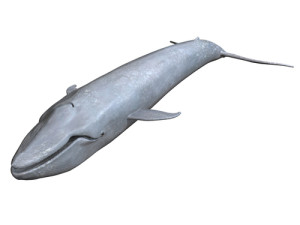
Blue Whale
Blue whales are the largest animals alive today and they have no teeth to eat food! Instead blue whales are filter feeders. There are a total of 15 types of whales that eat this way. These species are known as Baleen whales, because they have baleen plates instead of teeth. These plates are made up of stiff hairs that look like combs and are used to filter food from ocean water. Baleen whales filter small fish, crustaceans known as krill, and plankton from the ocean water. Baleen whales swallow large amounts of ocean water containing the food and then push the water out of their mouths through the baleen. While letting the water out of their mouths, the baleen keeps the food in their mouths. Humpback whales, gray whales, right whales, mink whales, sei whales, Byrde’s whales, and fin whales are all Baleen Whales.
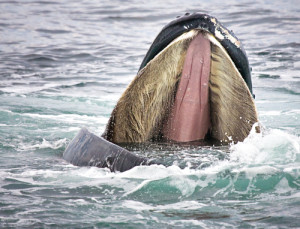
Humpback Whale showing off its baleen inside its mouth!
Scientists in Canada estimated that a Blue Whale can consume 480 million calories of food in a single dive. The average person ONLY consumes 2,000 calories per day. In one day, this whale will consume around 12,500 pounds of food to fuel its 300,000 pound (150 ton) body! Feeding occurs eight months of the year and then these whales live off their bubbler reserves for the other four months. Most of the time they dive to a depth of 300 feet to capture their prey.
Now these numbers don’t mean much unless you compare them to numbers and amounts that are easier to picture! Compared to blue whales an average adult eats about 4.7 pounds of food in one day. Additionally, 2,000 people who each weighed 150 pounds would equal the weight of one blue whale! If 2,000 people are too hard to picture, a blue whale is roughly the weight of 25 African bull elephants!
There are a lot more numbers that can be applied to the blue whale that are just amazing- like their hearts weight roughly 1 ton and are about the size of Science Bug! There are about 12,000 blue whales swimming throughout the oceans today where there used to be around 200,000 to 300,000 whales. Before you go off becoming a blue whale expert, try your hand at the math problems below to see what else you can “figure out” about this amazing animal!

Ariel View of Blue Whale in the Indian Ocean
1. If you round up the amount of food consumed by the average person, how many times more does a Blue Whale eat?
2. What percentage of its body weight does a blue whale eat in one day?
3. How many tons of food does a blue whale eat using the US short ton conversion (1 ton= 2,000 pounds)?
4. Using the numbers above, what is the average weight of a male African elephant weigh?
5. Can you convert the weight of the African elephant from pounds to tons?
6.If a small dog or large cat weighs 15 pounds, how many would you need to equal the weight of the blue whale? African elephant? And the 150-pound person?
7. If the depth that the whale dives to get its food was compared to football field with the 0 yard line (end zone) being at the surface, what yard line would the whale be diving to?
Look for the answers in an up-coming blog post! Send us your answers prior to us posting ours and get your name in the post!
Category: Mammals, Puzzles, Sea Life
baleen, baleen whales, blue whale, blue whale facts, blue whale math, conversions, filter feeder, largest animal, percentages, whales

Ever wonder what it would be like to see dolphins in their natural environment? Well, if you head to the Florida Aquarium in Tampa, Florida you can sign-up to go on a tour of Tampa Bay and perhaps see the dolphins for yourself. On 95% of the bay tours dolphins are spotted. That is because approximately 500 bottle nose dolphins make Tampa Bay their home. The average water depth of Tampa Bayis about 12 feet which is a just a little deeper than a backyard in-ground pool. Yet these dolphins are able to survive and thrive in these waters despite that Tampa Bay is also home to one of the busiest seaports in the southern United States.
Category: Blog, Sea Life
baby dolphin, baby dolphin jumping, bottel nose dolphins, dolphin facts, dolphin tours, dolphin videos, dolphins, dolpins Florida, Florida, Florida Aquarium, Tampa, Tampa dolphins, Tampa Family Activities

I was lucky to get a chance to meet Winter, the star of Dolphin Tale, her friends, and Cammie, the Senior Marine Mammal Trainer at the Clearwater Marine Aquarium who takes care of them. Winter uses a prosthetic tail to move since hers was damaged and fell off after being tangled in a rope of a crab trap. The Clearwater Marine Aquarium helped Winter to heal and the engineers at Hanger Prosthetics continue to make her new prosthetic tails as she grows.
Not only is Winter’s story a remarkable story of perseverance, so is the story of the Clearwater Marine Aquarium. It took the aquarium founders 11 years to find the current site, remodel it (since it use to a wastewater treatment facility), and then be able to welcome animals and guests! If you get a chance, I highly recommend a visit.
Category: Sea Life
adaptations, baby dolphin, bottle feeding a dolphin, Clearwater Marine Aquarium, dolphin sunburn, Dolphin Tale, dolphins, Hanger Prosthetics, Hope the dolphin, Panama the dolphin, prosethetic tail, Visiting florida, Visiting Tampa, Winter the dolphin

Do you know what these are? Some thought they were “fish eggs” and the others called them “jellyfish eggs”. My friend Tina did the research and found out that they were salps.
Salps are small filter-feeding organisms which pump water through their body to feed and move. Unlike jellyfish, they have a spinal cord at some point in their lifetime. They arrived with the warm waters of the Gulf Stream. Swimming with them felt like moving through a sea filled with elbow macaroni! They stuck in hair and bathing suits but were otherwise harmless. 
What is great about these organisms is that they remove carbon from the water. The carbon exits the system of the salp when it excretes waste (goes “number 2”) and the pellets sink to the sea floor and can stay there for centuries!
Taking carbon out of the upper water surface of the ocean leaves more room for the carbon in the water and this means less will escape into our atmosphere as carbon dioxide- a notorious global warming gas. Ultimately these little critters are helping the ice caps stay afloat! For this, the polar bears think salps rock!
Category: Sea Life
carbon dioxide removal, global warming, green house gases, jellyfish, jersey shore, new jersey shore, ocean animals, ocean life, salps, sea animals, Sea Life, shore

 Manatees live in the warm shallow rivers, bays, canals and coastal areas and are also known as ‘sea cows’. They prefer water above 68 degrees Fahrenheit and will rarely be found in water below that temperature. A day in the life of these gentle creatures consists of slowly swimming, eating, and resting. Manatees usually swim at a speed of 5 miles per hour, however they can swim 15 miles per hour in short bursts. Believe it our not, manatees have fingernails and if you could see an x-ray of a front flipper, it looks very much like the bone structure of a human hand.
Manatees live in the warm shallow rivers, bays, canals and coastal areas and are also known as ‘sea cows’. They prefer water above 68 degrees Fahrenheit and will rarely be found in water below that temperature. A day in the life of these gentle creatures consists of slowly swimming, eating, and resting. Manatees usually swim at a speed of 5 miles per hour, however they can swim 15 miles per hour in short bursts. Believe it our not, manatees have fingernails and if you could see an x-ray of a front flipper, it looks very much like the bone structure of a human hand.



















